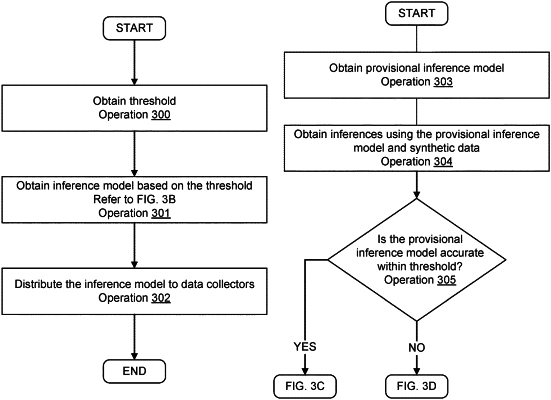| CPC H04L 67/10 (2013.01) [G06F 1/03 (2013.01); G06N 5/04 (2013.01)] | 20 Claims |

|
1. A method for managing inference model distribution in a distributed environment where data is collected in a data aggregator of the distributed environment and from at least a data collector operably connected to the data aggregator via a communication system, the method comprising:
obtaining, by the data aggregator, a threshold, the threshold indicating a maximum acceptable difference between:
data expected to be collected by the data collector during a future period of time, and
future data predicted to be collected by the data collector and the data aggregator during the future period of time;
obtaining, by the data aggregator, an inference model based on the threshold, the inference model being adapted to generate a prediction comprising the future data and is obtained by:
performing a lookup in an inference model lookup table using the threshold to obtain a result; and
based on the result:
obtaining a list of inference models that meet the threshold, the list of inference models being a subset of all inference models referenced in the lookup table; and
selecting an inference model from the list of inference models, the inference model having a lowest computational cost for operation of the inference models of the list of inference models, where each inference model of the subset of all inference models are adapted to generate the prediction that comprises the future data, and different inference models of the subset of the inference models being adapted to generate the prediction at different degrees of accuracy and consume different quantities of computing resources of the data collector for generation of the prediction; and
distributing, by the data aggregator, the inference model to the data collector to facilitate twin inference generation by the data collector and the data aggregator, the twin inference generation facilitating aggregation of a portion of the data by the data aggregator without transmission of the portion of the data between the data collector and the data aggregator.
|